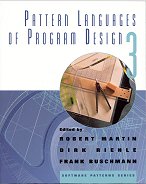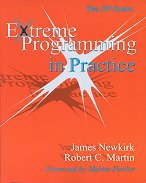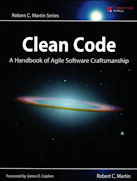The third in a series of books documenting patterns for professional software developers, this volume continues the tradition of informational excellence established by the first two volumes. Pattern Languages of Program Design 3 differs from the previous two volumes in that it includes international submissions, gathering the best papers from both PLoP’96 and EuroPLoP’96.
It covers a wide range of pattern-related subjects, and patterns are arranged by topic so software engineers can easily select those of greatest relevance to their needs and application domains. This book goes beyond teaching software engineers that design patterns are powerful tools to impart understanding—it shows where and when patterns are best applied.
The patterns presented are grouped into: • General Purpose Design Patterns • Variations on Design Patterns • Architectural Patterns • Distribution Patterns • Persistence Patterns • User Interface Patterns • Programming Patterns • Domain-Specific Patterns • Process Patterns • Patterns on Patterns
Contents
- • Bobby Woolf. Null Object. 1998
- • Peter Sommerlad. Manager. 1998
- • Dirk Baumer, Dirk Riehle. Product Trader. 1998
- • Ralph E. Johnson, Bobby Woolf. Type Object. 1998
- • Eugene Wallingford. Sponsor-Selector. 1998
- • Erich Gamma. Extension Object. 1998
- • Robert C. Martin. Acyclic Visitor. 1998
- • Martin E. Nordberg III. Default and Extrinsic Visitor. 1998
- • Paul Dyson, Bruce Anderson. State Patterns. 1998
- • Bran Selic. Recursive Control. 1998
- • Dirk Riehle. Bureaucracy. 1998
- • Douglas C. Schmidt. Acceptor and Connector. 1998
- • Fernando Das Neves, Alejandra Garrido. Bodyguard. 1998
- • Irfan Pyarali, Tim Harrison, Douglas C. Schmidt. Asynchronous Completion Token. 1998
- • Antonio Rito Silva, Joao Dias Pereira, Jose Alves Marques. Object Recovery. 1998
- • Neil B. Harrison. Patterns for Logging Diagnostic Messages. 1998
- • Dirk Riehle, Wolf Siberski, Dirk Baumer, Daniel Megert, Heinz Zullighoven. Serializer. 1998
- • Wolfgang Keller, Jens Coldewey. Accessing Relational Databases. 1998
- • Mark Bradac, Becky Fletcher. A Pattern Language for Developing Form Style Windows. 1998
- • Douglas C. Schmidt, Tim Harrison. Double-Checked Locking. 1998
- • Chris Cleeland, Douglas C. Schmidt, Tim Harrison. External Polymorphism. 1998
- • Lorraine L. Boyd. Business Patterns of Association Objects. 1998
- • Liping Zhao, Ted Foster. A Pattern Language of Transport Systems (Point and Route). 1998
- • Peter Molin, Lennart Ohlsson. The Points and Deviations Pattern Language of Fire Alarm Systems. 1998
- • Brian Foote, Joseph Yoder. The Selfish Class. 1998
- • Don Roberts, Ralph E. Johnson. Patterns for Evolving Frameworks. 1998
- • Charles Weir. Patterns for Designing in Teams. 1998
- • David E. DeLano, Linda Rising. Patterns for System Testing. 1998
- • Gerard Meszaros, Jim Doble. A Pattern Language for Pattern Writing. 1998


